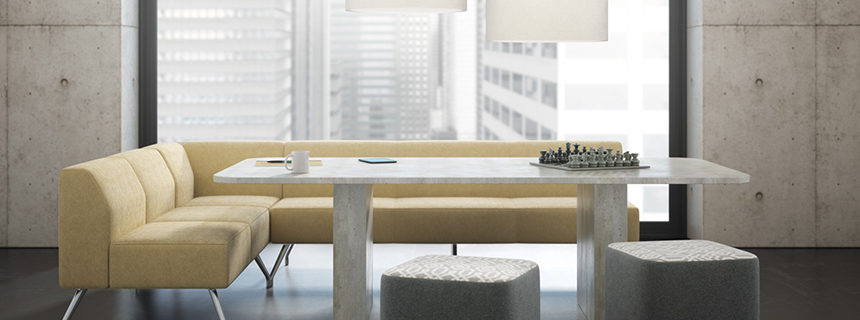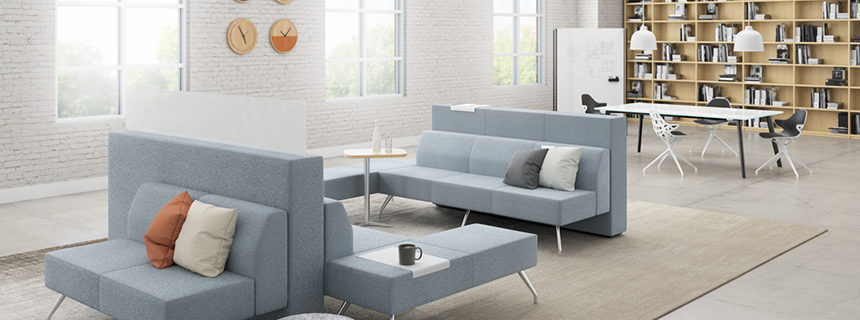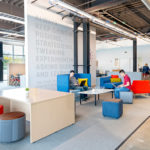The June 1, 2018 Pacific Business News cover story, “The Office of the Future”, accurately suggests that the workplace of the future will both function and look different from what it is today. A bank of Dilbert-like neutral cubicles, some random chairs and desks, a conference table, and a white board will no longer suffice.
Very few businesses can match the resources of Google, Adobe or eBay, mentioned in the article, to provide cafes, yoga studios and laundry service for employees. Instead, our economy is made up, largely, of small- and medium-sized businesses. This segment, even with more modest budgets, has tremendous opportunities to curate their workspaces.
Effective work environment will accommodate a variety of activities, from one employee to many. Some will benefit from standing work stations, others may need a small, private area from time to time, and the whole organization may benefit from walls throughout the office (not just in a conference room) for brainstorming and planning. If employees do their best work somewhere other than their assigned work station, don’t underestimate the importance of well-designed lounge and common areas.
Workspace design is not a beauty contest; instead, it is a thought-out plan to create dynamic environments that can change over time, without compromising the organization’s culture or DNA. More offices now accept that employees can be productive in many different spaces, if the tools necessary for the job are available.
Effective space planning takes a little time before decisions to move a wall or buy some desks are made. Knowing how employees and clients work best and understanding how the business will change over time will drive your space plan. I would argue that office design should be a semi-democratic process by seeking input from many levels but leaving the decision-making to a few to ensure the organization is cohesively designed in an adaptable and meaningful way.
Recent office redesigns at Liliu`okalani Trust, PBS Hawai`i and Aloha United Way are striking examples of notable local organizations that have set a new standard for the office of the future in Hawai`i. These organizations, with limited budgets, were able to rally partners who shared their vision of creating dynamic, flexible spaces to ensure employee well-being and to accomplish their respective missions.






